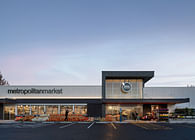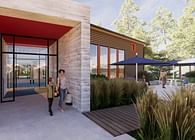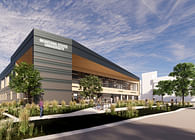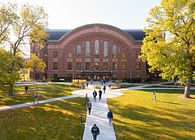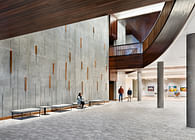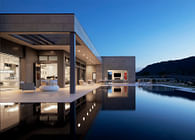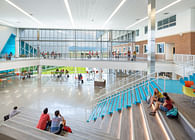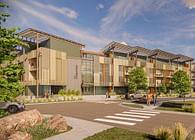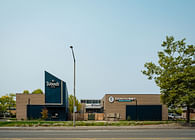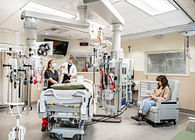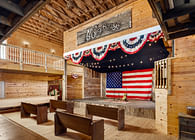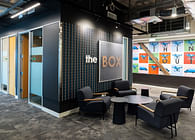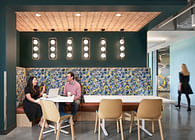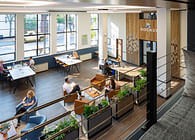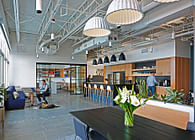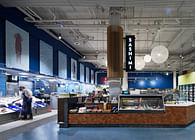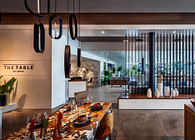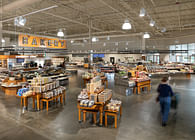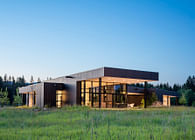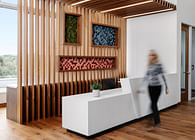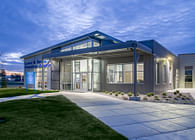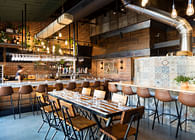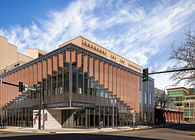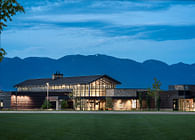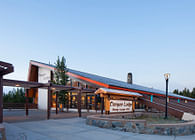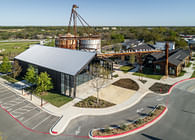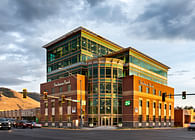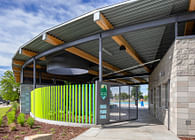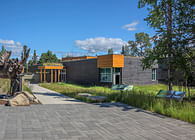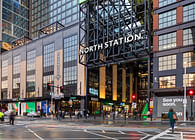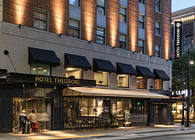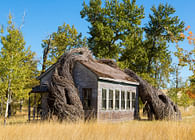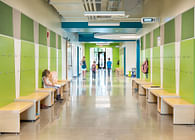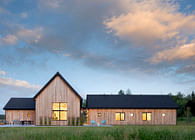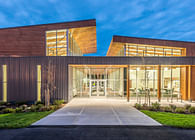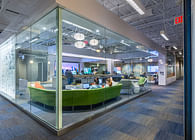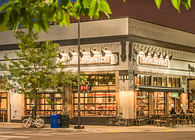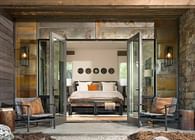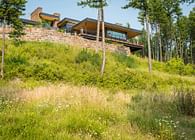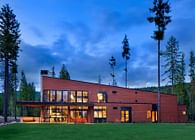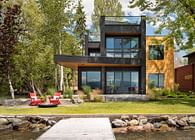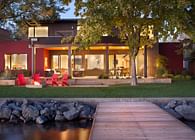
Pahranagat (pran-uh-get) National Wildlife Refuge inspires awe with its lush green meadows, blue lakes, and abundant wildlife. Situated on the Pacific Flyway, thousands of waterfowl blanket the lakes and marshes during spring and fall migrations. Amidst this natural splendor rests the 5,000-square-foot Visitor Center. Situated on a four-acre site, the Center—designed to achieve Net Zero Energy—includes an exhibition space, lobby and reception area, multipurpose room, staff offices, and public restrooms. Exterior elements include parking for buses/RVs, cars, and staff vehicles. Native landscaping and thoughtful preservation measures authentically blend together the building and landscape. An outdoor amphitheater and trail system with interpretive installations guide visitors through the cultural and historic significance of the valley.
Modest in character, the Visitor Center takes a deliberate backseat to the powerful landscape of the Pahranagat Valley. The design relies on simple, rectilinear proportions both in plan and elevation. Material choices for the building—wood framing with stucco siding, Cor-Ten steel panels, aluminum/ fiberglass windows, and a standing seam metal roof—were selected for their durability, ability to visually merge with the desert landscape, and their ease of construction given the remote location and limited access to building trades. The building also incorporates elements significant to the indigenous people of the area, which include the Southern Paiute and Chemehuevi tribes. As one of the last in a series of new visitor centers developed by U.S. Fish & Wildlife Service, everything had to be accomplished within a tight, fixed budget.
The firm’s ability to provide all design and engineering services needed for the project meant increased efficiency throughout the process. Targeting LEED Silver certification and Net Zero Energy (NZE), the integrated design team was able to evaluate the design for functionality, aesthetics, and performance simultaneously. The result is a cost-effective, high-performance building that exceeds performance goals. Other conservation measures included upgraded building insulation, daylight harvesting, and ground-source geothermal HVAC. On-site renewable energy is provided by roof-mounted solar photovoltaic panels. High efficiency LED lighting is used throughout. After a full year of operation, energy data showed the facility operated well below Zero Net Energy consumption; the building produced almost twice as much energy as it consumed.
Status: Built
Location: Alamo, NV, US
Firm Role: CTA Architects Engineers | Cushing Terrell (architecture, interiors, audiovisual, civil, electrical, fire protection, structural, mechanical, forensic engineering, landscape architecture, and site design)
Additional Credits: Northern Management Services, Inc. (client)
Photographers: Mike Hill & Checko Salgado/ focalchrome



